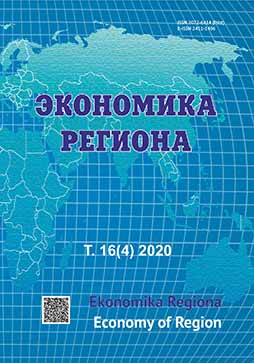Технологическое разнообразие и самообеспеченность производства передовыми производственными технологиями в российских регионах
Technological Diversity and Access of Russian Regional Enterprises to Advanced Manufacturing Technologies
Author(s): Vlada Brilliantova, Valeriya Vlasova, Konstantin FursovSubject(s): Economy
Published by: Институт экономики Уральского отделения Российской академии наук
Keywords: advanced manufacturing technologies; classification of Russian regions; regional economic development; technological diversity; technological self-reliance; comparative analysis;regional policy;
Summary/Abstract: The development and renewal of production technologies are among the key factors determining the competitiveness and sustainable economic growth of companies. At the same time, the spread of advanced manufacturing technologies (AMT), influencing the effectiveness of resource potential, is uneven across Russian regions. The paper focuses on the diverse application patterns of advanced manufacturing technologies in the groups of regions, classified depending on key parameters of their economic development, i.e., the structure of production and employment as well as gross regional product (GRP) per capita adjusted for price factor. To examine the relationship between socio-economic parameters of regional development and technological portfolios of local enterprises, we analysed the indices of technological diversity and self- reliance of enterprises. For that purpose, we used the data from the national statistical survey on the development and use of AMT by enterprises for 2011–2018. The conducted analysis indicates that independent technology development is not a priority for most Russian regions. Moreover, all types of regions (except for some agricultural ones) demonstrate the priority of technology imports. However, the demand for national R&D results is gradually growing and increases opportunities for research and educational institutions to enter the technology market, provided there are sustainable mechanisms for transferring the knowledge to the real economy. Successful examples include the developed regions relying on the extractive and manufacturing industries as well as the areaswhere leading entities managed to link scientific and industrial components. Future studies can focus on testing the obtained results using classifications based on principles other than the similarity of socio-economic conditions of regions.
Journal: Экономика региона
- Issue Year: 16/2020
- Issue No: 4
- Page Range: 1224-1238
- Page Count: 15
- Language: Russian

